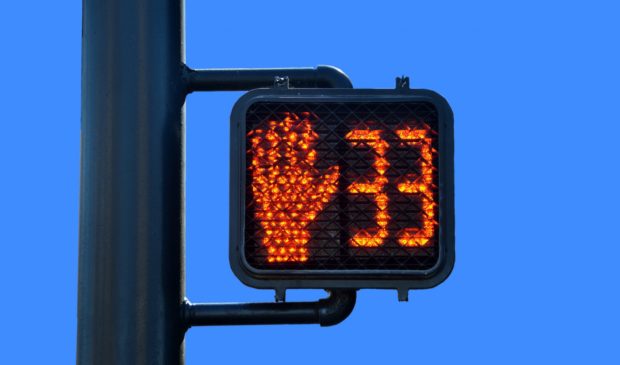Downtown walk signals get a safety upgrade
Friday, January 10, 2020 by
Ryan Thornton The Austin Transportation Department took a big step for safety this week by reprograming downtown traffic signals to give pedestrians more time to cross before motorists enter the intersection. “Leading pedestrian intervals,” as the signal timing tool is called, give people on foot a head start of between five and seven seconds before car traffic is given a green light.
The department said the decision doubles the total number of such crossings citywide, supporting the city’s goal of reducing traffic-related deaths and serious injuries to zero by 2025.
In total, the department added 110 LPIs downtown, where foot traffic volume is high and there has been a disproportionate number of individuals struck by drivers.
“Downtown makes up less than 1 percent of Austin’s road network, but more than 10 percent of crashes affecting pedestrians occur in this part of our city,” said Jen Duthie, Transportation’s arterial management division manager.
From January 2015 through October 2019, the city counted 1,676 instances citywide where a person on foot was struck by a vehicle. Of those, 203, or 12 percent, of the crashes were downtown.
The Pedestrian Advisory Council praised the move at its meeting Monday, with Chair Adam Greenfield extending gratitude to Transportation Department staffers for acknowledging and acting on the need for safer crossings.
“Austin’s peer Vision Zero cities, like San Francisco, Los Angeles and New York City have seen significant decreases in crashes between drivers and pedestrians since bolstering their use of (leading pedestrian intervals),” said Transportation Safety Officer Lewis Leff.
Dedicated walk time intervals are noted in both the Austin Strategic Mobility Plan and the 2018 Austin Pedestrian Safety Action Plan as an effective way to enhance safety and improve the city’s multimodal mode share.
Transportation Director Robert Spillar said the idea is to make people more visible to drivers and reinforce pedestrian right of way at intersections. He said that’s particularly necessary for “our most vulnerable neighbors who may be slower in crossing an intersection.”
The Urban Street Design Guide from the National Association of City Transportation Officials recommends intervals be at least three to seven seconds and as long as 10 seconds where there is a high volume of foot traffic or larger street width.
According to Leff, these relatively small timing adjustments can be “overwhelmingly positive.” Leff cited a 2010 study by the Transportation Research Board that found a nearly 60 percent reduction in drivers hitting pedestrians after installing the crossing intervals.
Even so, there are some technical constraints the department considers before programming dedicated walk times. Transportation representative Jacob Barrett said the department’s signal engineers look at several traffic-related factors in the wider context of the built environment before deciding whether or not to reprogram the signals.
Barrett said the intervals also require appropriate signal infrastructure. He told the Austin Monitor that most downtown intersections already featured the necessary communications hardware that allowed staffers to quickly program the adjustments, though other parts of the city may present more of a technical challenge. Nonetheless, he said the department expects to use the tool more frequently going forward.
“We strongly believe more LPIs on the highest-risk traffic corridors will increase safety for everyone,” Duthie said. “We will regularly assess the LPIs’ performance and make adjustments as needed.”
The Austin Monitor’s work is made possible by donations from the community. Though our reporting covers donors from time to time, we are careful to keep business and editorial efforts separate while maintaining transparency. A complete list of donors is available here, and our code of ethics is explained here.
You're a community leader
And we’re honored you look to us for serious, in-depth news. You know a strong community needs local and dedicated watchdog reporting. We’re here for you and that won’t change. Now will you take the powerful next step and support our nonprofit news organization?



